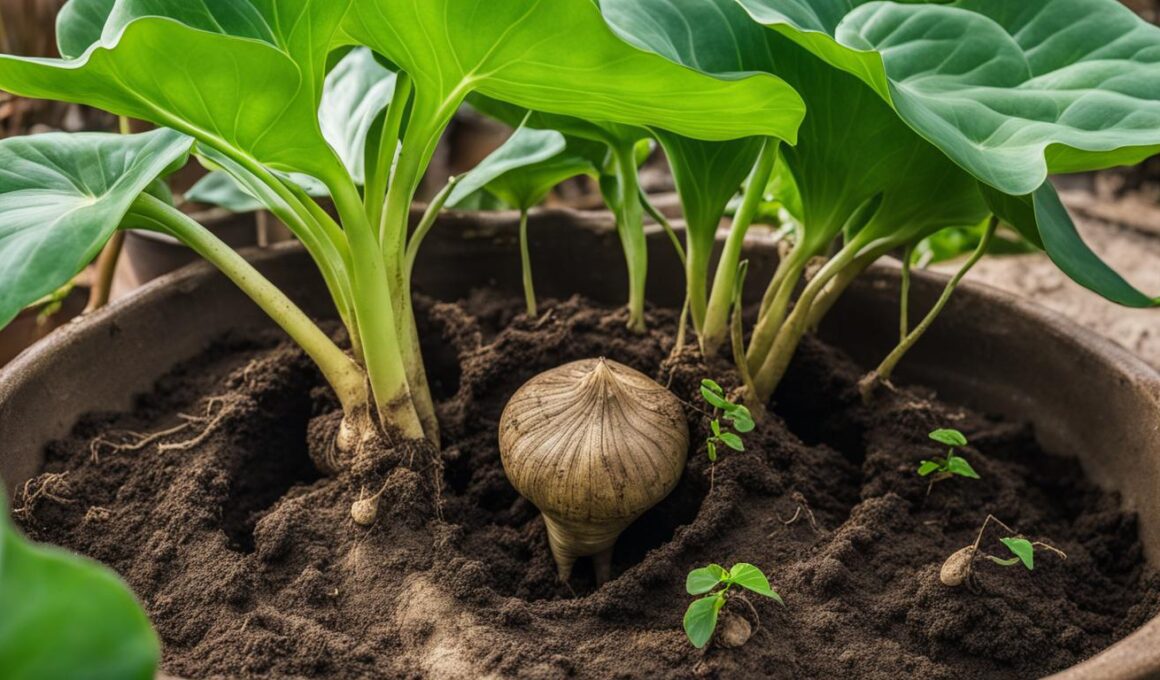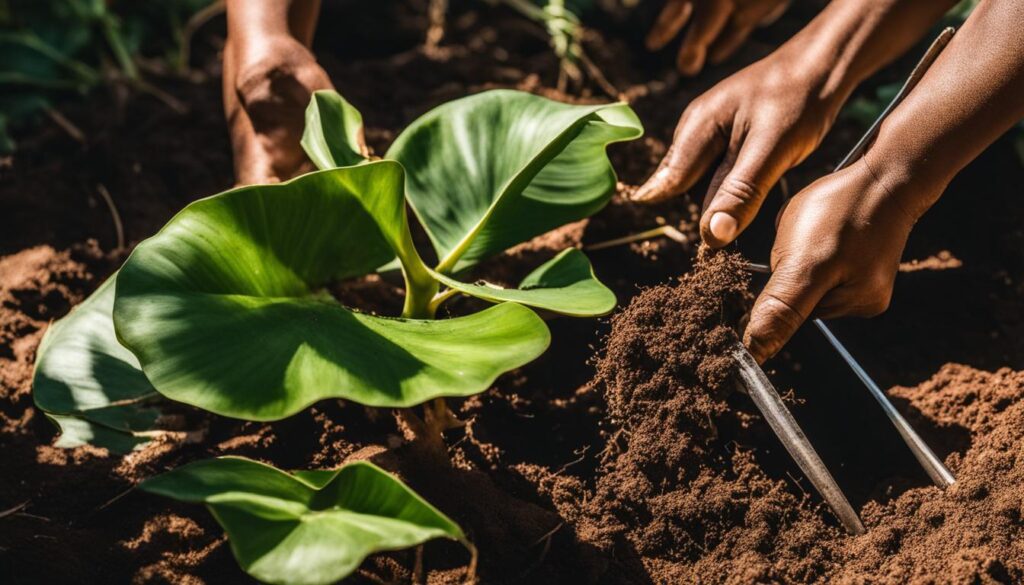Propagating elephant ear plants is a simple and rewarding process that allows you to expand your collection of these beautiful tropical plants. There are several methods you can use to propagate elephant ear plants, including division and growing from tubers. By following these techniques, you can successfully propagate elephant ear plants and enjoy their lush foliage in your garden or indoor space.
To propagate elephant ear plants, you can either divide the plant or grow them from tubers. Division involves carefully digging up the parent plant and selecting healthy tubers with roots to separate and plant in separate containers or in the ground. This method is common and effective for propagating elephant ear plants.
Alternatively, you can propagate elephant ear plants from tubers by digging up the parent plant and carefully cutting and separating the new tubers from the parent plant’s tuber. These new tubers can then be planted in well-draining potting mix indoors or stored until spring for outdoor planting.
Whichever method you choose, providing the right care, regular watering, and a suitable growing environment will ensure successful propagation and growth. With a little patience and attention, you can enjoy the stunning foliage of elephant ear plants in your own space.
Division Method for Propagating Elephant Ear Plants
Division is one of the most common methods used to propagate elephant ear plants. To start, carefully dig up the parent plant in the fall, when it is going dormant. Remove the parent plant from its pot or in-ground location and select healthy tubers with roots to divide.
Gently separate the new tubers from the parent plant, making sure each tuber has at least one new root bud or sprout. Then, plant the tubers in separate containers or in the ground, making sure to provide regular care to help them establish and thrive.
Dividing elephant ear plants through the division method allows you to create new plants from the existing ones. By carefully separating the tubers and providing proper care, you can expand your elephant ear plant collection and add beauty to your garden or indoor space.
Propagating Elephant Ear Plants from Tubers
Another method for propagating elephant ear plants is by using tubers. Tubers are swollen, underground stems that store nutrients and energy for the plant. They serve as a source for new growth and can be easily separated to create new plants.
To start propagating elephant ear plants from tubers, you will need to dig up the parent plant in the fall or spring. Look for healthy tubers that have roots attached. These tubers will have the best chance of successful growth.
Tip: It’s important to handle the tubers carefully to prevent any damage or breakage.
Once you have selected the tubers, the next step is to carefully untangle and cut away the new tuber’s roots from the parent plant’s tuber. Take a sharp knife and cut the new tubers away from the parent plant wherever they intersect.
Tip: Make clean, precise cuts to minimize the risk of infection or rot.
After separating the tubers, you have two options. You can either plant the tubers indoors in a well-draining potting mix or store them in a cold and dark place until spring if you want to plant them outside.
If you choose to plant the tubers indoors, select a pot with good drainage and fill it with a well-draining potting mix. Plant the tubers with their sprouting end facing upwards, burying them about an inch deep. Place the pot in a warm and bright location, away from direct sunlight.
Tip: Maintain a consistent level of moisture in the soil, ensuring it doesn’t become waterlogged.
If you opt to store the tubers, place them in a paper bag or container with peat moss or vermiculite to provide insulation and prevent drying out. Keep them in a cool, dark space, such as a basement or garage, until spring arrives. Before planting them outdoors, allow the tubers to warm up and dry for a few days.
Tip: Check the stored tubers periodically for any signs of rot or disease.
Once the danger of frost has passed and the weather has warmed up, you can transplant the tubers outdoors. Choose a location with partial shade or full sun, depending on the specific requirements of the elephant ear variety you are growing.
Tip: Prepare the planting area by loosening the soil and incorporating organic matter for improved drainage and nutrient availability.
When planting the tubers, make sure to bury them at the appropriate depth, typically around 2-4 inches, with the sprouting end facing upwards. Water the newly planted tubers thoroughly and continue to provide regular watering throughout the growing season.
Conclusion
Propagating elephant ear plants is a fun and rewarding process that allows you to expand your plant collection and enjoy the beauty of these tropical plants. Whether you choose to propagate through division or with tubers, following the proper steps and providing the right care will ensure successful growth.
When propagating with division, carefully select healthy tubers with roots and separate them from the parent plant, ensuring each tuber has at least one new root bud or sprout. Plant the tubers in separate containers or in the ground, and provide regular care to help them establish and thrive. On the other hand, if you prefer propagating with tubers, untangle the new tuber’s roots from the parent plant’s tuber, cut them away, and plant them in a well-draining potting mix or store them until spring for outdoor planting.
Remember to select healthy tubers, provide them with a suitable growing environment, and give them regular watering and maintenance. With a little patience and care, you can successfully propagate elephant ear plants and enjoy their stunning foliage in your space. So go ahead, propagate your elephant ear plants and watch them flourish!
Can I Use the Same Propagation Method for Elephant Ear and Ivy Plants?
Yes, you can use the same propagation method for elephant ear and ivy plants. When propagating ivy plants at home, you can also apply the same technique to propagate elephant ear plants. Both plants can be easily propagated through stem or leaf cuttings in a similar manner.










